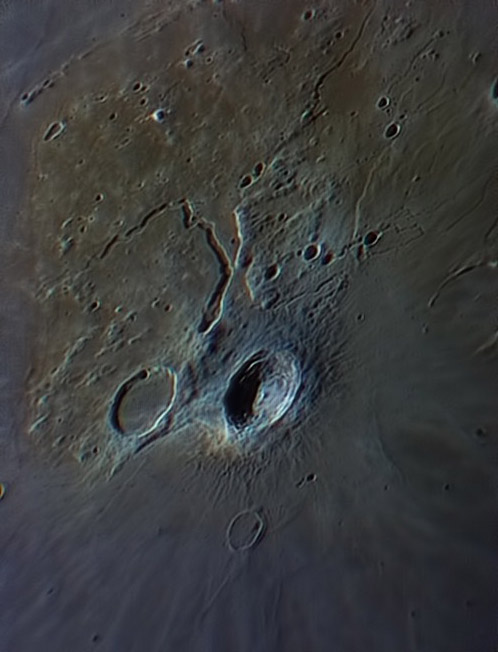Difference between revisions of "April 14, 2013"
| Line 3: | Line 3: | ||
<!-- ws:start:WikiTextHeadingRule:0:<h1> --> | <!-- ws:start:WikiTextHeadingRule:0:<h1> --> | ||
<!-- ws:start:WikiTextLocalImageRule:6:<img src="/file/view/LPOD-Apr14-13.jpg/422854582/LPOD-Apr14-13.jpg" alt="" title="" /> -->[[File:LPOD-Apr14-13.jpg|LPOD-Apr14-13.jpg]]<!-- ws:end:WikiTextLocalImageRule:6 --><br /> | <!-- ws:start:WikiTextLocalImageRule:6:<img src="/file/view/LPOD-Apr14-13.jpg/422854582/LPOD-Apr14-13.jpg" alt="" title="" /> -->[[File:LPOD-Apr14-13.jpg|LPOD-Apr14-13.jpg]]<!-- ws:end:WikiTextLocalImageRule:6 --><br /> | ||
| − | <em>image by [mailto:jonbosley@netzero.net | + | <em>image by [mailto:jonbosley@netzero.net Jon Bosley], Central Texas</em><br /> |
<br /> | <br /> | ||
| − | This is the most accurate depiction of the color of the Aristarchus Plateau that I have seen in an image. Many years ago I visually observed a very similar coloration at full Moon, an olive tone, but haven't noticed it since. The distribution of this olive hue is the same as the pyroclastic deposit often depicted as red in false color images shot through filters in different parts of the spectrum. Jon's image is simply the natural colors that he has enhanced. I [http://www.astronomycameras.com/products/usb/dfk21au618as/ | + | This is the most accurate depiction of the color of the Aristarchus Plateau that I have seen in an image. Many years ago I visually observed a very similar coloration at full Moon, an olive tone, but haven't noticed it since. The distribution of this olive hue is the same as the pyroclastic deposit often depicted as red in false color images shot through filters in different parts of the spectrum. Jon's image is simply the natural colors that he has enhanced. I [http://www.astronomycameras.com/products/usb/dfk21au618as/ noticed] that Jon's DFK camera blocks the near infrared, which many do not, so perhaps its depiction of color is more like the human eye. <br /> |
<br /> | <br /> | ||
| − | <em>[mailto:tychocrater@yahoo.com | + | <em>[mailto:tychocrater@yahoo.com Chuck Wood]</em><br /> |
<br /> | <br /> | ||
<strong>Technical Details</strong><br /> | <strong>Technical Details</strong><br /> | ||
Revision as of 18:03, 11 January 2015
Don't Hold the Olive

image by Jon Bosley, Central Texas
This is the most accurate depiction of the color of the Aristarchus Plateau that I have seen in an image. Many years ago I visually observed a very similar coloration at full Moon, an olive tone, but haven't noticed it since. The distribution of this olive hue is the same as the pyroclastic deposit often depicted as red in false color images shot through filters in different parts of the spectrum. Jon's image is simply the natural colors that he has enhanced. I noticed that Jon's DFK camera blocks the near infrared, which many do not, so perhaps its depiction of color is more like the human eye.
Chuck Wood
Technical Details
8/12/2012. Telescope: Celestron Edge HD 9.25; Mount: Orion EQ-G; Camera: DFK21au618.AS; Televue 2.5x Powermate
Related Links
Rükl plate 18
21st Century Atlas chart 28.



